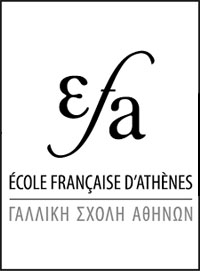Palace of Nestor Excavations - 2022
Informations Générales
Numéro de la notice
18537
Année de l'opération
2022
Chronologie
Mots-clés
Nature de l'opération
Institution(s)
Toponyme
Notices et opérations liées
Description
Palace of Nestor - Sharon R. Stocker and Jack L. Davis (University of Cincinnati / ASCSA) report on excavations of three parts of the site.
Grave of the Griffin Warrior (Fig. 1)
The goal was to excavate outside the southwestern wall in order to locate the line of the foundation trench into which the southwestern wall had been set. The attempt was successful, and the results justified our interpretation of the history of the grave as published in the most recent issue of Hesperia (2022, part 2): the burial deposit had not been disturbed after its initial deposition.
Tholos VI
Excavation continued in Tholos VI, exploring the blocking wall, and continuing to excavate the special LH IIA deposit in the dromos of the tomb. Removal of stone tumble in the stomion has clarified many aspects of the construction of the blocking wall. One significant discovery was that, in Byzantine times, a deep pit had been dug into it, perhaps in order to mine stones for reuse. At the bottom of the pit was an anonymous follis of Dunbarton Oaks Class B, assigned in the Dumbarton Oaks catalog to Michael IV and there dated to “ca. 1030/35 – 1042 (?) (Fig. 2).
Area H
An unanticipated discovery of dense complexes of walls, with several phases of construction and built with different techniques (Fig. 3). A large plastered offering table rested on an uppermost floor (Fig. 4), a large terracotta scoop next to it. Outside the room was a deep pit, filled with pottery and animal bones, including miniature vessels and animal figurines—quite probably the remains of a ritual feasting deposit.
Grave of the Griffin Warrior (Fig. 1)
The goal was to excavate outside the southwestern wall in order to locate the line of the foundation trench into which the southwestern wall had been set. The attempt was successful, and the results justified our interpretation of the history of the grave as published in the most recent issue of Hesperia (2022, part 2): the burial deposit had not been disturbed after its initial deposition.
Tholos VI
Excavation continued in Tholos VI, exploring the blocking wall, and continuing to excavate the special LH IIA deposit in the dromos of the tomb. Removal of stone tumble in the stomion has clarified many aspects of the construction of the blocking wall. One significant discovery was that, in Byzantine times, a deep pit had been dug into it, perhaps in order to mine stones for reuse. At the bottom of the pit was an anonymous follis of Dunbarton Oaks Class B, assigned in the Dumbarton Oaks catalog to Michael IV and there dated to “ca. 1030/35 – 1042 (?) (Fig. 2).
Area H
An unanticipated discovery of dense complexes of walls, with several phases of construction and built with different techniques (Fig. 3). A large plastered offering table rested on an uppermost floor (Fig. 4), a large terracotta scoop next to it. Outside the room was a deep pit, filled with pottery and animal bones, including miniature vessels and animal figurines—quite probably the remains of a ritual feasting deposit.
Auteur de la notice
Georgios Mouratidis
Références bibliographiques
Sharon R. Stocker, Calla McNamee, Salvatore Vitale, Panayiotis Karkanas, and Jack L. Davis, Hesperia 91.2 (2022), 211-250
Unpublished field report, ASCSA
Unpublished field report, ASCSA
Date de création
2023-02-03 12:02:59
Dernière modification
2023-08-07 13:24:45
Figure(s)








